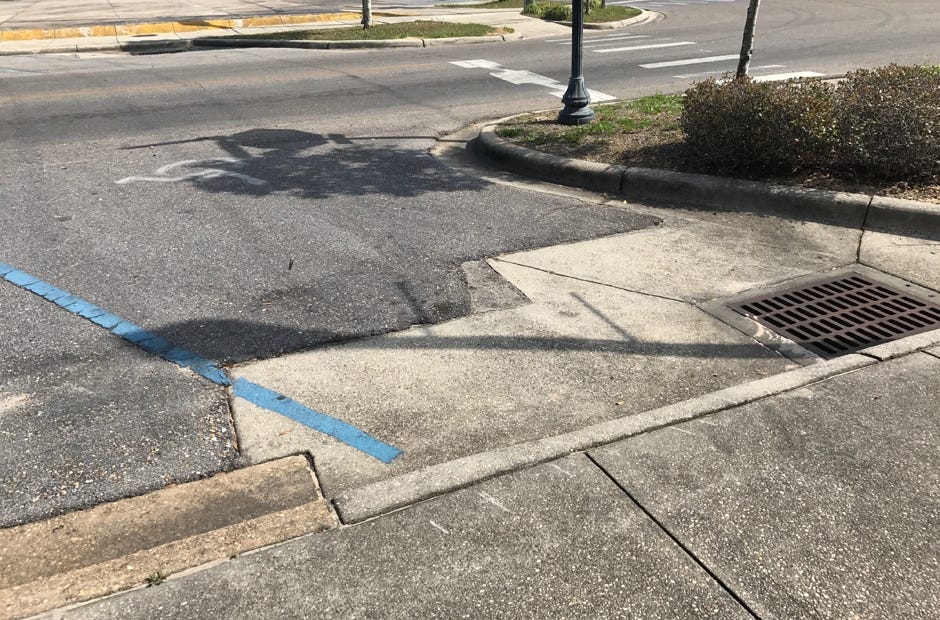![This disabled spot on Main Street feeds into a sewer vent. The nearest ramp requires individuals travel through traffic onto the crosswalk ramp. [MARK JUDSON/News Bulletin]](http://127.0.0.1/wordpress/wp-content/uploads/2022/01/ghows-DA-477e8332-4c82-4426-e053-0100007f15d6-82c8c2f3.jpeg)
CRESTVIEW—Main Street has various businesses that appeal to a range of people, but one group of residents faces a difficult situation when visiting the area.
Despite hundreds of parking spaces lining the roadway, less than five are designated for disabled motorists. A disabled parking space offers permitted users space, ramps and decreased distance to storefronts.
Traditional parking spaces measure 9 feet wide on average and have additional spaces on immediate borders. This differs from disabled spaces, which are required to be 12 feet wide, with a 5-foot access that can be shared when adjacent to other disabled spots. The additional space accommodates wheelchair ramps or lifts and allows for improved mobility.
The Main Street spaces are accompanied by an equal amount of spaces on side roads stemming from the business district. The spaces are designated as disabled parking but little else is done to make them accommodating.
Most of the spots are not located near a curb ramp, making access for those with limited mobility difficult. Several of the spaces require the occupant to pass through the lane of traffic to reach the nearest ramp. This prevents ease of access for disabled patrons and forces some to travel a greater distance to reach their destination.
A misconception of disabled parking spaces is that they are for use only by individuals with wheelchairs, canes or other medical mobility devices. However, the Florida Department of Highway Safety and Motor Vehicles issues the permits to those with lung disease, cardiac conditions and those with portable oxygen tanks.
Additionally, people with severe walking limitations due to arthritis, neurological or orthopedic conditions qualify for the permit.
Main Street’s limited number of spaces falls within legal guidelines due to the wording of Florida Statute 553.5041, which dictates disabled parking laws. A minimum number of disabled spaces is only set when concerning government offices, metered parking or public lots.
A public government building needs only a single space in the “general vicinity” if one is not provided on the building’s premises. Within the building’s premise would include a marked parking area for a certain structure, such as the parking lot reserved for City Hall.
One disabled space must be designated for every 150 metered spaces, according to the law. This is the only other calculated minimum set for such spaces. Main Street is exempt from this provision since it doesn’t use metered spaces.
Public lots require no fewer than 2 percent of available parking to be accessible, according to the Americans with Disabilities Act in 2010.
Outside these rules, disabled parking spaces must only be “increased on the basis of demonstrated and documented need,” according to the Florida Statutes.

This article originally appeared on Crestview News Bulletin: Is there enough disabled parking on Main Street?
